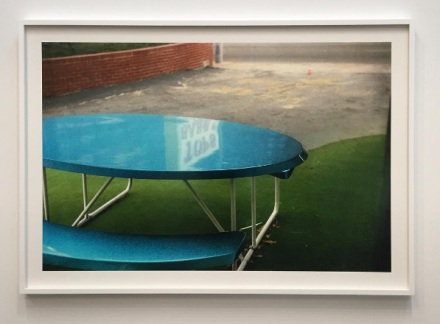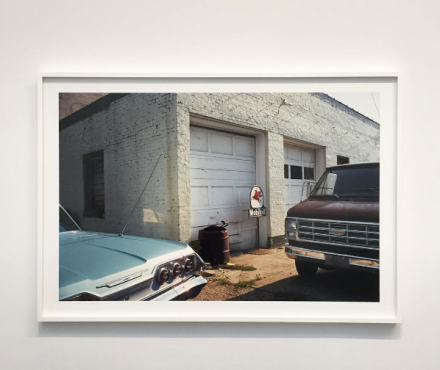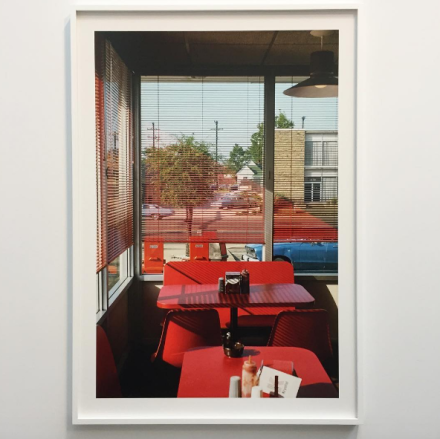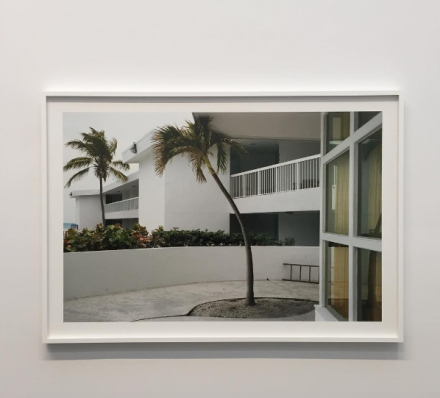
William Eggleston, Untitled from The Democratic Forest, (c. 1983-1986), via Art Observed
There are few photographers who have left a mark on their medium in the way that William Eggleston has over the course of his career. Pioneering an approach to the photograph as meticulous as it is seemingly effortless, Eggleston’s work has charted a path and progression through both his own chosen craft and the American landscape. Capturing subdued, yet sublime moments of life across the country, from momentary pauses in urban bustle to the somber stillness of the American rural South. Now, the Tennessee-born artist is revisiting his landmark project The Democratic Forest at David Zwirner in New York, a look back at the artist’s career that simultaneously marks his first exhibition since joining the gallery for global representation.

William Eggleston, Untitled from The Democratic Forest, (c. 1983-1986), via Art Observed
The Democratic Forest, first started during the 1980’s, comprises a wide selection of photos from the Eastern and Southern portions of the United States, in conjunction with a selection of works photographed during Eggleston’s travels abroad. The range of images, locations and spaces, however, serve merely as a site for Eggleston to continue his signature approach to capturing space. Each element and object is offered ample room to breath, as architectural details, momentary glances of human presence, and light itself play across the frame. In one piece, an unattended hose twists across a concrete step and onto a patch of dirt, breaking up rigid lines with a momentary inflection of curving, colorful action.

William Eggleston, Untitled from The Democratic Forest, (c. 1983-1986), via Art Observed
It’s this sense of color, and the effects it conjures on the world around it, that serves these images so well, radiant flares of red and green plastics, sodden earth tones and stucco walls, that define so much of the American landscape. Yet here, pulled away from the infrastructure and activity that ultimately define their function, Eggleston offers a moment of pause, of close attention to these lush colors and contrasts, and their subtle presence as the undergirding information of daily life in America.

William Eggleston, Untitled from The Democratic Forest, (c. 1983-1986), via Art Observed
Eggelston’s work is notable for this sense of place, of the presence of color and its relation to private or public spheres, functions and architectural forms. In one shot, the soft pink and blue colorations of concrete and wood at an outdoor stand command the viewer in its sense of abstracted purpose, but clear sense of environment, as if the stand could sit in any lot or drive-in parking lot, but only in America. In another, a solitary interior presents itself in a more subdued palette, with gentle blues and whites giving way to a billowing curtain the glow of the light outside.
These moments in Eggleston’s work offer a fitting crystallization of his work, and more broadly, the act of seeing itself. Letting light play such a strong hand in his pieces, each work underscores his ability to capture moments of visual harmony, where the viewer is equally aware of the world just beyond the lens, as they are in the elements shaping it, and the act of seeing it in turn. At each point, Eggleston’s own hand rarely seems to enter too explicitly into view, a note that emphasizes his mastery all the more loudly.

William Eggleston, Untitled from The Democratic Forest, (c. 1983-1986), via Art Observed
— D. Creahan
Read more:
William Eggleston: Selected Works from The Democratic Forest [David Zwirner]



